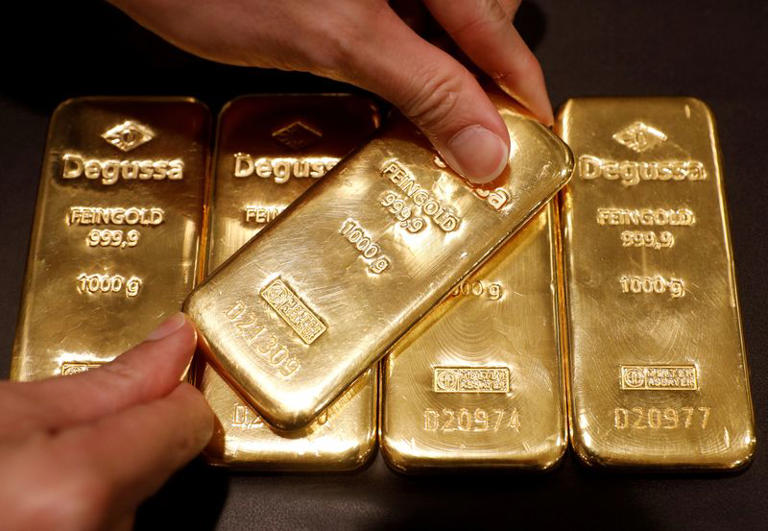China, the largest official sector buyer of gold, is poised to renew its gold acquisitions once prices retreat from the record highs reached in May. This expectation was highlighted by industry experts at a recent conference, underscoring the continuing robust fundamentals that support the metal.
During the Asia Pacific Precious Metals Conference in Singapore, David Tait, CEO of the World Gold Council (WGC), mentioned, “China’s data did show a pause,” referring to the People’s Bank of China (PBOC) halting its gold purchases in May after 18 consecutive months of additions. “(But) they are just waiting and watching. If prices correct to the $2,200 per ounce level, they will resume again.”
As of Monday, benchmark spot gold was trading around $2,300 per ounce, following its most significant daily drop in three and a half years due to the PBOC’s unchanged holdings in May. This pause sent global spot prices tumbling, illustrating China’s substantial influence on the gold market. In May, gold prices hit a record $2,449.89 per ounce, buoyed by expectations of interest rate cuts and strong central bank buying driven by geopolitical tensions.
China’s gold purchasing strategy is tightly regulated by the PBOC, which controls gold import quotas for commercial banks. The nation was the largest official sector buyer of gold in 2023, with net purchases totaling 7.23 million ounces, or 224.9 metric tons, marking the highest annual acquisition since at least 1977. In April alone, China’s central bank added 60,000 troy ounces to its reserves.
The broader trend of central bank gold purchases is expected to persist. A survey by the Official Monetary and Financial Institutions Forum indicated that central banks plan to increase their gold holdings over the next 12-24 months. This sentiment was echoed by KL Yap, chairman of the Singapore Bullion Market Association, who stated, “Central banks are buying gold and China is the main buyer. Sentiment on gold is bullish because of geopolitical tensions and elections. China is expected to buy more.”
Historically, gold has been regarded as a hedge against geopolitical and economic uncertainties, making it a favored investment in China amid ongoing economic concerns and a weaker yuan. Despite the reported pause in China’s gold buying in April and zero additions in May, analysts like Rhona O’Connell of StoneX believe that this does not imply a cessation of purchases in the future. “The fact that China’s gold buying was minimal in April, and in May it was reported as zero, does not imply by any stretch of the imagination that they are not going to start reporting again,” O’Connell noted.
In response to the soaring prices, the Shanghai Gold Exchange increased margin requirements for certain gold futures contracts from 8% to 9% in April. This move aimed to temper speculative activity as prices reached historical highs.
As China continues to monitor gold prices closely, its potential re-entry into the market is anticipated to significantly influence global gold dynamics. The country’s strategy highlights its ongoing reliance on gold as a strategic asset amid the prevailing economic and geopolitical challenges.
